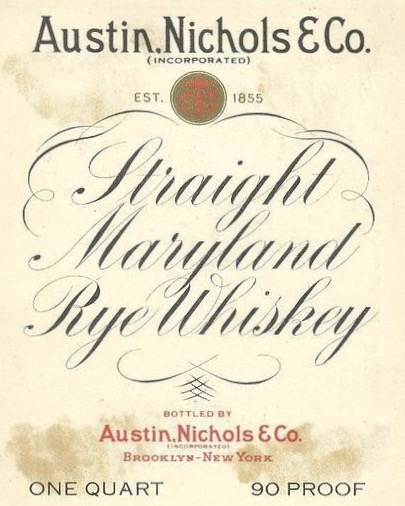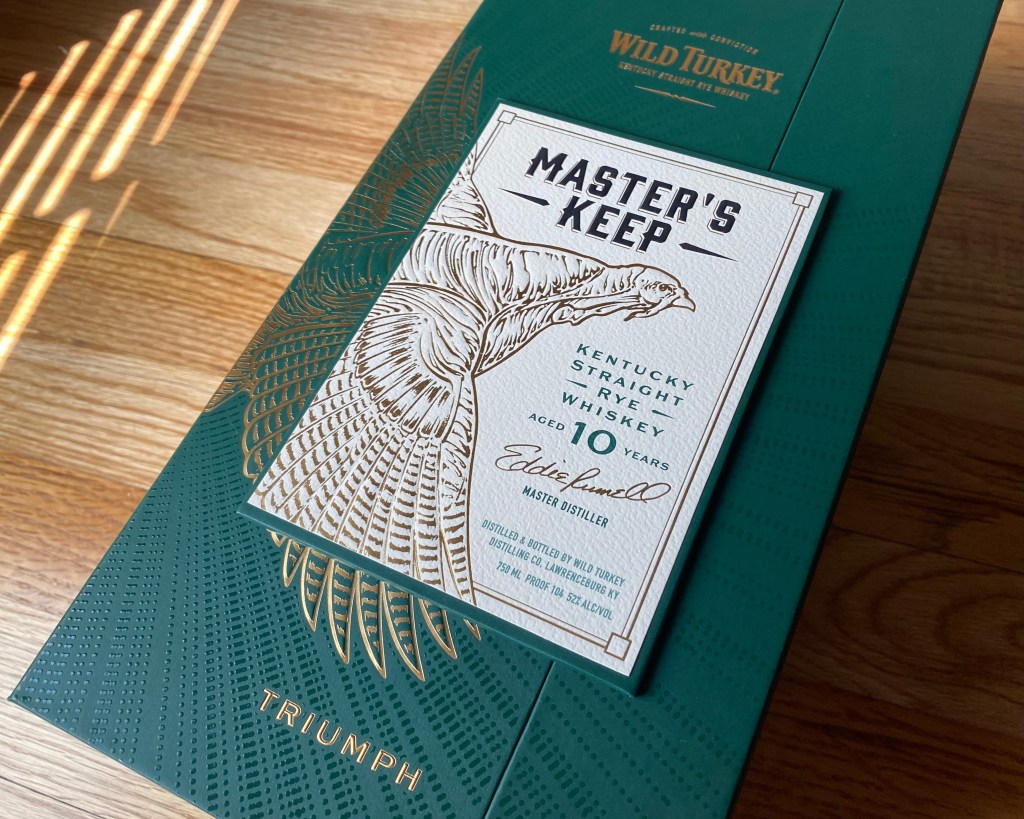This is the second installment of a two-part series. For the first installment please see Wild Turkey’s Triumph (Part 1).
With the exception of 2016, Wild Turkey has introduced a new Master’s Keep expression each year for the last nine years. It has become a release that American whiskey fans get excited about, though it wasn’t always this way. There was a time when those hard-to-miss boxes collected dust on liquor store shelves. It wasn’t until 2019’s Cornerstone that I first heard of enthusiasts having difficulty finding a Master’s Keep to purchase. Three stellar whiskeys in and folks finally started paying attention … when it was a rye.
Think about that for a moment. Sure, one could argue the demand was long overdue and it just happened to occur for Wild Turkey in a year they released a special rye. But this was Pre-Covid – a year before American whiskey’s popularity exploded in earnest. Granted, there were individuals buying up special releases to flip just as there are now, but the secondary premiums for modern Wild Turkey in 2019 were minimal. The fact that Master’s Keep Cornerstone was the first (and at the time the only) limited-edition rye whiskey in the history of the brand undoubtedly contributed to the increased attention.
That’s a very big deal. Why? Because Wild Turkey bottled rye from the very beginning. Even before the Wild Turkey label had been conceived, then owner Austin, Nichols & Co. sold straight rye whiskey as a core product. That means it took somewhere between 70-80 years to determine that a unique Wild Turkey rye whiskey needed to exist.

There are reasons. First, American rye’s popularity began a steady decline following the repeal of Prohibition. For nearly 40 years Wild Turkey sourced aged rye whiskey from Maryland, Pennsylvania, and Illinois. Even after distillation moved to Kentucky in the mid 1970s, it was more of an afterthought – a box to check in a brand catalog that had barely changed since its inception. Add to it the fact that Jimmy Russell prefers sipping bourbon over rye whiskey and you have a rye portfolio that, regardless of its high quality, was destined for obscurity.
It wasn’t until the 2000s when Jimmy’s son Eddie Russell decided to shake things up – first, with the creation of Russell’s Reserve 6-Year-Old Rye in 2007, and second, with the introduction of Russell’s Reserve Single Barrel Rye in 2015. A handful of private barrel selections even made their way into the mix, though it was only the beginning of a growing interest that would quickly push the limits of supply.
If any of this sounds familiar it’s because I’ve written about it on several occasions. Wild Turkey’s rye history is genuinely fascinating. From sourced whiskey and a master distiller whose favorite rye is one that never touches his glass, to a 10-year-old expression that will likely sell out before many have a chance to buy it, much less try it, there’s a lot to explain. I’ll refrain from digging too deep in this piece, though I recommend my Wild Turkey Rye Primer and Master’s Keep Cornerstone review as starting points for the curious.
As for how we got from 2015 to the state of Wild Turkey’s rye program in 2024, I can sum it up with two words: Bruce Russell. What began as an indirect influence soon evolved into a direct influence – one that’s most evident in the brand’s latest limited-edition offering, Master’s Keep Triumph. The bottle may sport Eddie Russell’s signature, but he’ll be the first to tell you – Bruce is the inspiration. Eddie reaffirms this sentiment in the liner notes of Master’s Keep Triumph:
Master’s Keep Triumph is my tip of the cap to my son Bruce Russell, newly appointed Associate Blender at Wild Turkey. Bruce has always had a passion for rye, and in making a Master’s Keep for his palate, it only felt right.
Thanks to Bruce and Eddie, we have the highest aged-stated straight rye ever released by Wild Turkey. Will it meet the expectations of an insatiable whiskey fanbase? At $275, I certainly hope so. But the real test requires tasting – a lot of tasting. I’ve put in the time (my bottle’s fill level is just above the halfway mark), now it’s time to share my thoughts.
For this review I’ll be using the same format I employed when reviewing Master’s Keep Cornerstone – offering commentary after each phase of the tasting (nose, taste, and finish). I’ll also sip it next to Cornerstone for those desiring a comparison approach.

Wild Turkey Master’s Keep Triumph (2024) – 104 proof (NCF) – Kentucky straight rye whiskey aged 10 years (reportedly a batch of 10- and 12-year-old whiskey) – distilled and bottled by Wild Turkey Distilling Co., Lawrenceburg, KY
Tasted neat in a Glencairn after a few minutes rest …
Color: dense amber
Nose: (mature, inviting) honey, warm apple butter, grilled peach, charred oak, rickhouse, dried tangerine, savory spice
Possibly my favorite thing about Triumph is its aroma. The decade spent in oak is instantly apparent, with notes of honey and flame-kissed peach. There’s also some woodiness and savory spice that I frequently associate with rye aged in toasted oak. I’m not saying Wild Turkey used toasted barrels for this release. I’m confident it’s ISC char 4 cooperage, but the notes exist nonetheless. It’s dark in tone, warm in character, and welcomes you to take a sip.
Nosing Cornerstone against Triumph, the differences are more obvious than I wagered. Cornerstone is sweeter, with brighter fruit and spice notes. What it lacks in maturity (honestly, not much math-wise as it’s a blend of nine- and 11-year-old whiskey) it more than makes up for in approachability.
Taste: (creamy mouthfeel) English toffee, toasted caramel, well-balanced oak, baked apples, nutmeg, clove, singed lemon peel
Triumph’s flavor is precisely what the nose suggests … A mature, creamy Kentucky rye loaded with darker notes and warm baking spice. There’s bourbon-esque toffee and toasted caramel offset by baked apples and lightly torched citrus. It’s lovely, and for lack of a better word, unique for the brand. In fact, I can’t think of a single Wild Turkey rye expression – including any “OG” single-barrel selection or independent bottling – that tastes like Master’s Keep Triumph. It truly is its own thing.
As for Cornerstone, it’s more of a classic Turkey rye, albeit complex … cake frosting, caramel drizzle, lemon squares, but with a significant notch up in peppery spice. Part of me wants to attribute this to the old still (retired by 2011), though maturation location and barrel selection could play an equivalent contrasting role. Like its nose suggests, Cornerstone’s taste is sweeter and more traditional in profile when compared to Triumph.
Finish: (robust, oak-driven) medium-long w/ oak char, semisweet cola, toasty brown sugar, cinnamon, leather, white pepper
I’ll be direct here – if you’re not a fan of charred oak, you might take issue with Triumph’s finish. The char notes are prominent. If that’s something you avoid, you’ll probably be happier with Russell’s Reserve Single Barrel Rye (which is younger, but still 104 proof and non-chill filtered). But don’t get me wrong – Triumph isn’t a “char bomb”. It’s just char-present. Beyond the oak there’s plenty of cola, brown sugar, and lingering spice to keep your senses satisfied. Much like the nose and palate, warmer, heavier tones are the driving force.
Cornerstone, on the other hand, is a sweet and spicy dream. The finish is longer and loaded with juxtaposing layers of orchard fruit and peppery spice that dance on your tongue for days. If I had to choose between the two finishes, the win goes to Cornerstone. That’s not a knock on Triumph. I think Eddie did an amazing job crafting each. But there’s something about Cornerstone’s finish that’s remarkably enjoyable. I’d argue a majority of dusty Turkey rye fails to come close.
Overall: Master’s Keep Triumph excels at taking Wild Turkey’s rye whiskey in a whole new direction. I appreciate that Eddie Russell didn’t opt for the easy route, repeating the formula he established with Master’s Keep Cornerstone. That would’ve been an effortless win – the proverbial low-hanging fruit. Instead, Eddie opted for a darker, bolder, more bourbon-like rye than Wild Turkey is known for. Hell, I could see Jimmy actually sipping this one if they didn’t tell him it was rye.
But at $275, an important decision must be made. What type of rye do you like? If you prefer a fruity, zesty, vibrant rye profile then you’re likely better off with Rare Breed Rye or Russell’s Reserve Single Barrel Rye. On the other hand, if you appreciate a richer, more oak-influenced Kentucky rye whiskey, Triumph belongs at the top of your list. As for me, I’ll be searching for a backup bottle (if I can find one). Variety is the spice of life and I’ve never had a Wild Turkey rye that tastes like Triumph.
In closing, Master’s Keep Triumph is an excellent whiskey that builds upon the foundation Cornerstone established five years prior. Yet much like its predecessor, Triumph isn’t the end-all, be-all of Wild Turkey limited editions. I’m confident we’ll see a day when a Turkey rye offering bests its bourbon counterparts. We’re close, but we’re not there yet. Given Bruce’s talent and passion for the category it’s simply a matter of time.
dj
Special thanks to Campari and their PR team for the bottle and the chance to review this whiskey.
Enjoy this blog? Please consider supporting it via Patreon. In return you’ll receive access to exclusive rewards and weekly whiskey content. Thank you! dj


